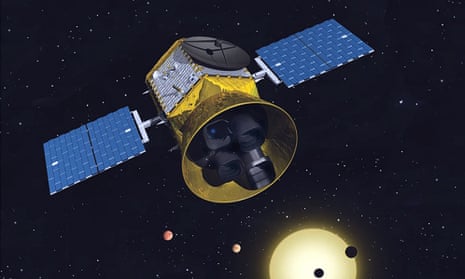Nasa’s next planet hunting mission has arrived at the Kennedy Space Centre, in Florida, for final checks ahead of its April launch. The Transiting Exoplanet Survey Satellite (TESS) will spend at least two years studying more than 200,000 nearby stars and looking for planets. The mission is expected to discover thousands of previously unknown worlds by detecting the small drops in light which occur when each planet passes across the face of its parent star.
This approach, known as the transit method, was employed to great effect by Kepler, a Nasa mission which has detected, so far, more than 2,500 confirmed planets around other stars.
But whereas Kepler has looked at a single distant starfield, TESS will concentrate on nearby stars scattered across the sky. It is particularly targeting rocky worlds in the habitable zones of stars. These planets are the ones that could be most suitable for supporting life.
Nasa’s James Webb Space Telescope, planned for launching in 2019, will study some of the nearest planets found by TESS. Its instruments will take direct images of the planets to analyse the brightness and colours of those bodies – information that will give the first hint about their atmospheric and surface conditions.

Comments (…)
Sign in or create your Guardian account to join the discussion